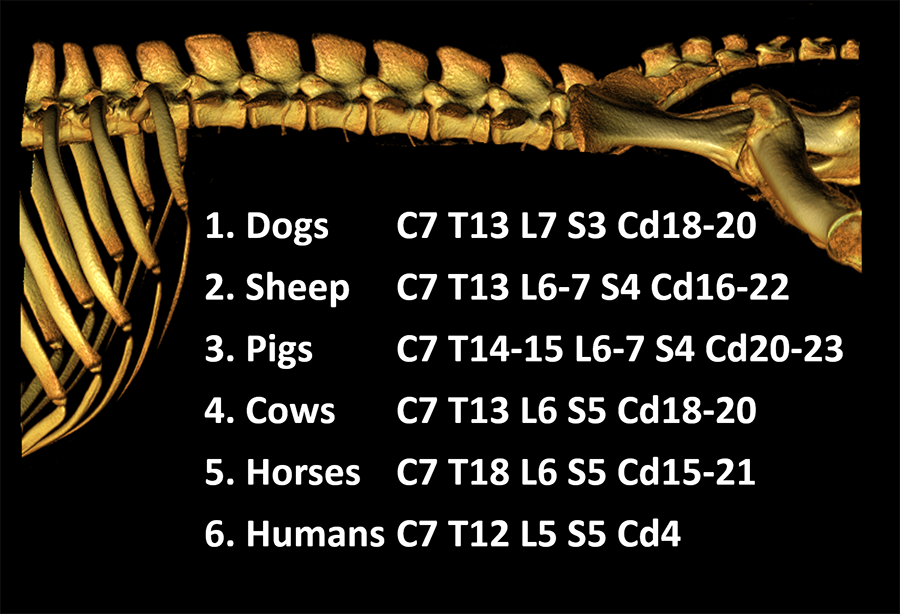Week of 20 April 2021

1. Dogs / 2. Sheep / 3. Pigs / 4. Cows / 5. Horses / 6. Humans!
The mammalian vertebral column consists of five morphologically differentiated groups of vertebrae: cervical (C), thoracic (T), lumbar (L), sacral (S) and coccygeal (caudal) (Cd). All mammals have seven cervical vertebrae, irrespective of the neck length between species (even giraffes and whales have seven cervical vertebrae!). The other vertebral segments vary according to each animal’s specific needs for locomotion or other unique functionality.
Vertebral comparative anatomy is important to consider when planning preclinical research for a spinal or orthopedic medical device. Although you may be developing your innovative new device for human use, humans actually have the smallest number of vertebrae of all mammals. Knowledge of anatomy across different animal species and how this impact medical device implants is key to selecting the best model for your preclinical study.
This image is a 3D reconstruction of the vertebral column of a sheep acquired using IMMR’s state-of-the-art 64-slice gated CT scanning system and 3mensio 3D reconstruction software.
Contact us to learn more and discuss your preclinical research and pathology needs.
Follow us on LinkedIn and don’t miss new images from our library that we post every Tuesday, when you’ll have another chance to recognize, identify or diagnose what is shown. You can also stay updated on some of the latest developments in Preclinical Science. Stay tuned!


